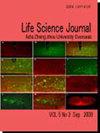Evaluation of Physiological Parameters in Response to Endurance Exercise of Zanskar Ponies Adapted to High Altitude of Ladakh Region
引用次数: 1
Abstract
Zanskar pony, a native horse breed of Ladakh mainly used for transportation in Trans-Himalayan region of India, is well adapted to high altitude hypobaric hypoxia environment. Due to extreme conditions of the Ladakh region, better endurance of these ponies under hypoxic and extreme cold conditions is of utmost concern for their recruitment in Indian Army. In the present study, 12 young trained Zanskar ponies were evaluated during endurance exercise at an altitude of 3292 meter above mean sea level. The animals were subjected to carriage transport with 65-70Kg load or riding on a track of 5-6 Km. Physiological parameters viz ., pulse rate (PR), heart rate (HR), rectal temperature (RT), respiratory rate (RR) and oxygen saturation (SaO 2 ) were recorded in Zanskar ponies during pre-exercise (T 0 ), post- exercise (T 1 ) and post recovery (T 2, 2 hours post resting) stages. Results showed marked increase in PR, HR, RR and RT post exercise time points. The mean values of PR increased from 49.83±4.62 to 73.67±21.54 per minute, HR from 48±13.60 to 75±15.82 beats/min, RR from 37.83±9.70 to 57.67±13.48 per min and RT from 99.62±0.34 101.04±0.53 °F from pre stress to post endurance stress. The mean SaO 2 level reduced significantly (88.58±6.75 at T 0 versus 64.00±18.70 at T 1 and 54.42±14.79 at T 2 ) post exercise. This indicated limited availability of arterial oxygen for tissues which could be vital factor for adverse change in some of physio-biochemical parameters. Though the trend of physiological response was similar for all the 12 animals, still variation at individual animal level was observed during endurance stress. In future, some of these physiological parameters along with biochemical and molecular parameters could be evaluated as potential biomarkers in selecting ponies with superior endurance trait specifically under hypoxic conditions.拉达克高原赞斯卡马耐力运动生理参数评价
Zanskar矮马是印度跨喜马拉雅地区主要用于运输的拉达克本地马种,非常适合高海拔低压缺氧环境。由于拉达克地区的极端条件,这些小马在缺氧和极冷条件下的更好耐力是印度军队招募它们最关心的问题。在本研究中,对12匹经过训练的赞斯卡小马在海拔3292米的耐力训练中进行了评估。对动物进行65-70Kg负载的运输或在5-6km的轨道上骑行。,在运动前(T0)、运动后(T1)和恢复后(T2,休息后2小时)记录赞斯卡小马的脉搏率(PR)、心率(HR)、直肠温度(RT)、呼吸频率(RR)和血氧饱和度(SaO2)。结果显示,运动后PR、HR、RR和RT时间点显著增加。PR平均值从49.83±4.62增加到73.67±21.54次/分,HR从48±13.60增加到75±15.82次/分、RR从37.83±9.70增加到57.67±13.48次/分和RT从99.62±0.34 101.04±0.53°F增加。运动后平均SaO2水平显著降低(T0时为88.58±6.75,T1时为64.00±18.70,T2时为54.42±14.79)。这表明组织动脉氧的可用性有限,这可能是一些生理生化参数发生不利变化的重要因素。尽管所有12只动物的生理反应趋势相似,但在耐力应激期间,仍观察到个体动物水平的变化。在未来,这些生理参数中的一些以及生化和分子参数可以被评估为潜在的生物标志物,用于选择具有优异耐力特性的小马,特别是在缺氧条件下。
本文章由计算机程序翻译,如有差异,请以英文原文为准。
求助全文
约1分钟内获得全文
求助全文
来源期刊
自引率
0.00%
发文量
0
审稿时长
2-4 weeks
期刊介绍:
Life Science Journal, the Acta Zhengzhou University Oversea Version, is an international journal with the purpose to enhance our natural and scientific knowledge dissemination in the world under the free opinion/idea publishing principle. The journal is calling for papers from all the world. All the valuable papers or reports that are related to life sciences - in their broadest sense - are welcome. Other academic articles that are only certain relevant but are of high quality will also be considered and published. Papers submitted could be reviews, objective descriptions, research reports, opinions/debates, news, letters, and other types of writings. All submitted manuscripts will be sent for external peer review and processed the editorial work. After the peer review, the journal will make the best efforts to publish the accepted valuable articles as soon as possible. Let''s work together to disseminate our research results and our opinions/ideas.

 求助内容:
求助内容: 应助结果提醒方式:
应助结果提醒方式:


